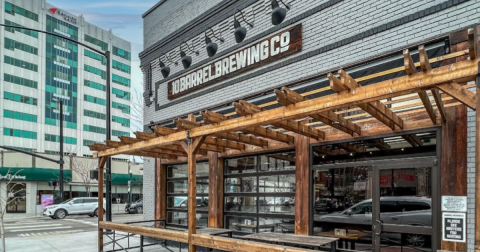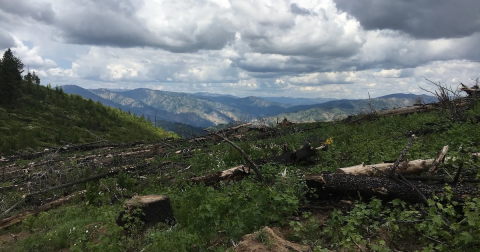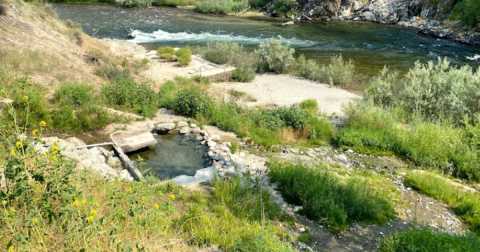11 Mysterious, Unusual Spots In Idaho You Never Knew Existed
Idaho is a mysterious place that never ceases to amaze, surprise, and delight both visitors and long-time residents alike. Full of twists and turns and hidden places—it’s nearly impossible to know them all! From little-known natural phenomena to some of the most unique, overlooked spots in the state, these local gems may not be Stonehenge or Easter Island, but odds are you haven’t been to all of them!
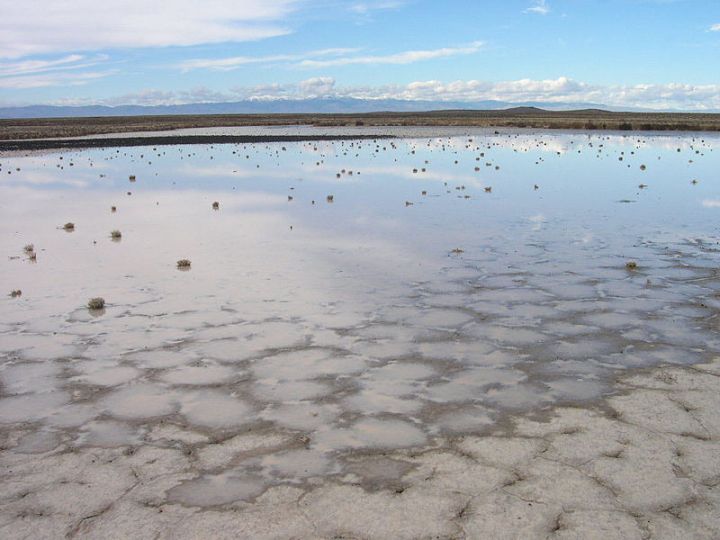
Despite Idaho's dry climate, playa lakes aren't the type of water bodies that Idaho is typically known for. Essentially "dry lakes," playas are one of the flattest known landforms - typically only forming after a heavy rainfall and disappearing rapidly. Uniquely, these desert puddles can stretch for miles, even with only a few inches of water. But Idaho has never been known for having a perfectly flat landscape, am I right?
A decade or so ago, a small playa lake - known as Tadpole Lake - formed in southern Idaho, just outside of Elmore County. But it isn't the lake itself that is mysterious. Rather, it was the discovery of a rare type of freshwater shrimp by an Army Corps engineer. These "Giant Fairy Shrimp" were once a major part of the aboriginal and Native American diets in lieu of fish, but they've all but disappeared as the climate has changed. With this year's heavy winter, maybe we'll see a comeback!
A decade or so ago, a small playa lake - known as Tadpole Lake - formed in southern Idaho, just outside of Elmore County. But it isn't the lake itself that is mysterious. Rather, it was the discovery of a rare type of freshwater shrimp by an Army Corps engineer. These "Giant Fairy Shrimp" were once a major part of the aboriginal and Native American diets in lieu of fish, but they've all but disappeared as the climate has changed. With this year's heavy winter, maybe we'll see a comeback!
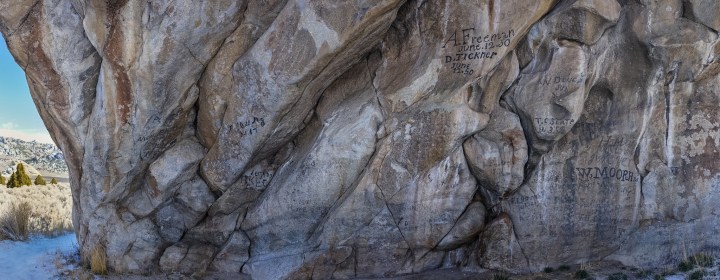
A while back, we wrote about our state's incredible City of Rocks, and even mentioned the historic trails and markings left there by original pioneers and California Trail emigrants.
Register Rock is another must-see, this time within the Massacre Rocks State Park. It showcases dozens of signatures from Idaho's original inhabitants, refugees, and passerby. By the time the wagon trains reached what is now Massacre Rocks State Park, the emigrants had traveled over twelve-hundred miles from Missouri... and leaving some sort of mark in this barren stretch of Idaho was no doubt a mood boose. You'll want to check this sight out before the names disappear, though--time is quickly causing these Johnny Hancocks to fade.
Register Rock is another must-see, this time within the Massacre Rocks State Park. It showcases dozens of signatures from Idaho's original inhabitants, refugees, and passerby. By the time the wagon trains reached what is now Massacre Rocks State Park, the emigrants had traveled over twelve-hundred miles from Missouri... and leaving some sort of mark in this barren stretch of Idaho was no doubt a mood boose. You'll want to check this sight out before the names disappear, though--time is quickly causing these Johnny Hancocks to fade.
Advertisement
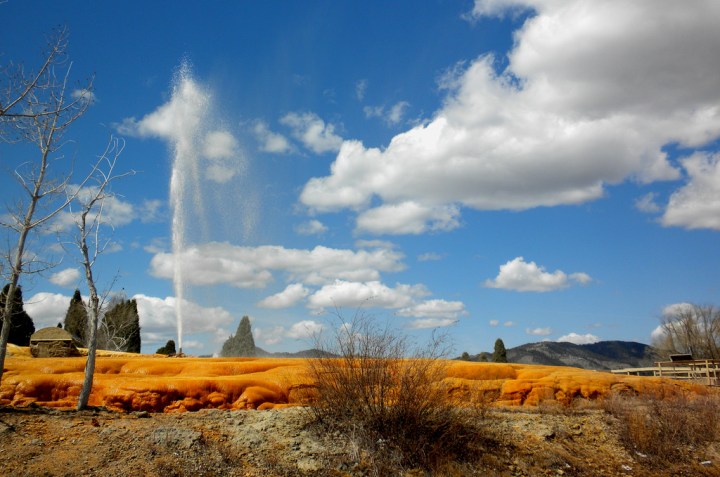
As Old Faithful gets less and less faithful as the years go by, one hidden Idaho treasure will continue to surprise and captivate visitors: the Soda Springs Geyser. Tucked away near the Yellowstone/Wyoming border, Soda Springs is a town uniquely seated on some of the most active underground water channels in the state, and directly tied to the Yellowstone geyser landscape.
On November 30, 1937, an attempt to drill for hot water took an unexpected turn when the bit hit 315 feet deep and unleashed the geyser. The extreme pressure is caused by carbon dioxide gas mixing with water in an underground chamber. Today, as the only man-made geyser in the world - it is capped and controlled by a timer, erupting every hour on the hour and reaching heights of 70-100 feet year-round. Surrounding the geyser, a beautiful park offers plenty of benches to enjoy the show, interpretive signage, and a boardwalk to see the mineral deposit bed made by the geyser up close and personal.
On November 30, 1937, an attempt to drill for hot water took an unexpected turn when the bit hit 315 feet deep and unleashed the geyser. The extreme pressure is caused by carbon dioxide gas mixing with water in an underground chamber. Today, as the only man-made geyser in the world - it is capped and controlled by a timer, erupting every hour on the hour and reaching heights of 70-100 feet year-round. Surrounding the geyser, a beautiful park offers plenty of benches to enjoy the show, interpretive signage, and a boardwalk to see the mineral deposit bed made by the geyser up close and personal.
Advertisement
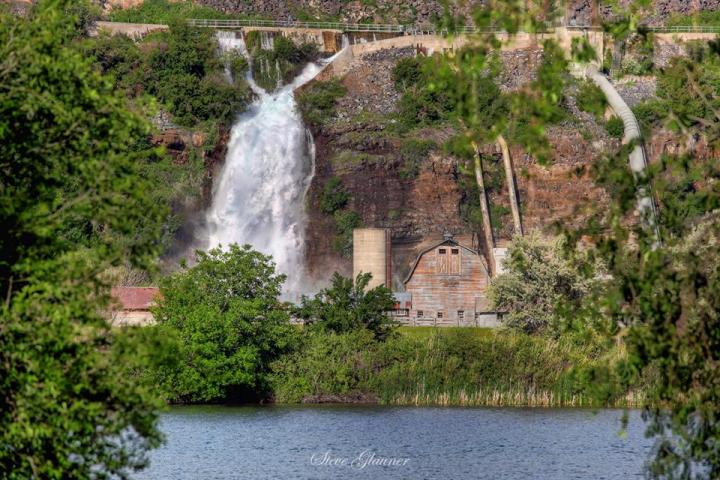
Formerly known as the Niagara Springs State Park, today the Thousand Springs complex is made up of multiple distinct parks - the newest and most treasured of which is Ritter Island, directly across from Minnie Miller Springs. This once-private property has a unique view of the lost river waterfalls as they pour out of the rock walls - the product and end point of a nearly 200-mile journey through the Snake River Plain Aquifer/Craters of the Moon landscape.
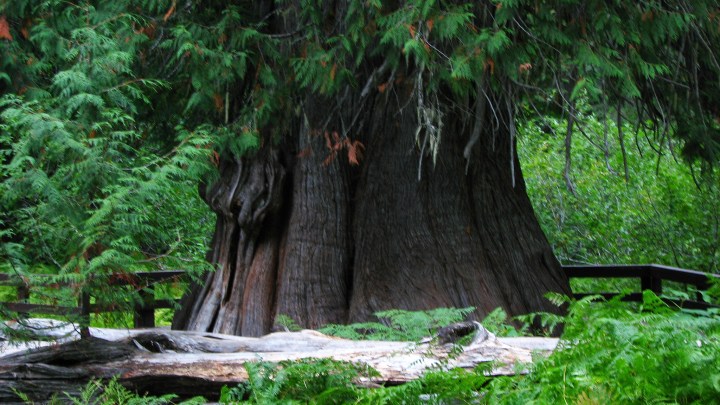
When visitors come to Idaho, ancient forests of immense cedar trees are an unexpected surprise. Tucked away in DeVoto, Roosevelt, Hobo, and various other dedicated cedar parks, these wise beauties have seen centuries worth of history take place. But while most of our state's giant cedars were seedlings when Columbus' ships tore through Central America, one glorious "grandfather tree" was already well into adulthood when Leif Erikson discovered America c. 990-1000.
As though the age of this Giant Western Red Cedar isn't enough on its own, the sheer size of this tree - although no match for California's Redwoods - is something to be seen in person.
As though the age of this Giant Western Red Cedar isn't enough on its own, the sheer size of this tree - although no match for California's Redwoods - is something to be seen in person.
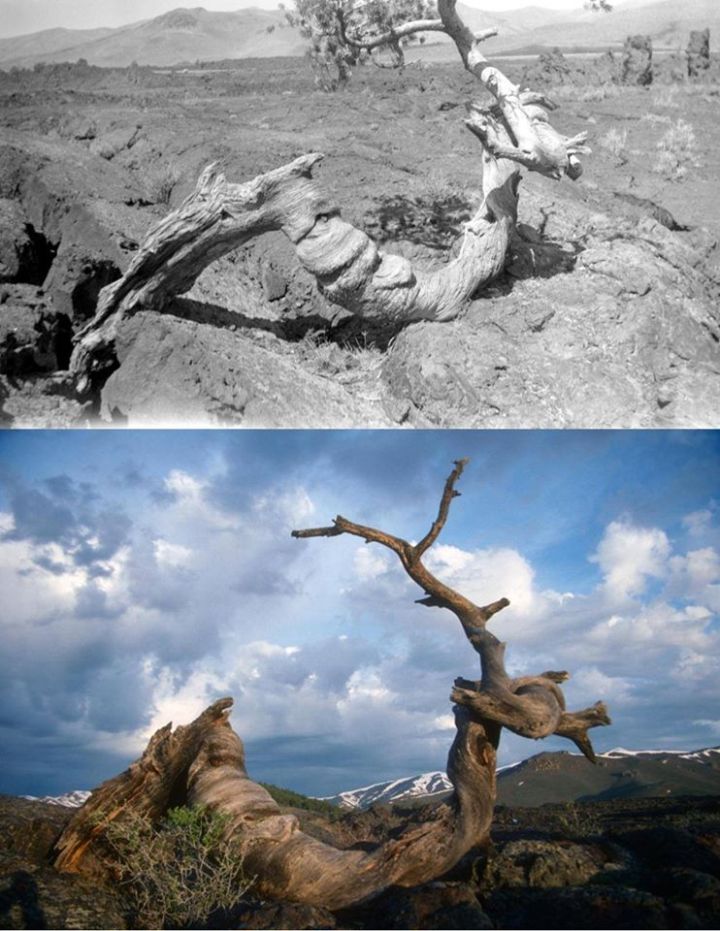
When Craters of the Moon was formed thousands of years ago by ancient lava flows, many of the region's twisted trees were caught in the path. Uniquely, the lava also preserved the trees - which stand virtually identical to how they did all those years ago. Others, like the tree pictured here, have been baked into permanence by the hot, desert sun.

The St. Joe is a beautiful river on its own, but it's also one of a kind - the only river in the country to flow between two lakes. Specifically, this gorgeous "shadowy" water body nestles itself between Benewah Lake and Lake Coeur d'Alene, creating one of the most unique river-lake environments in the world.
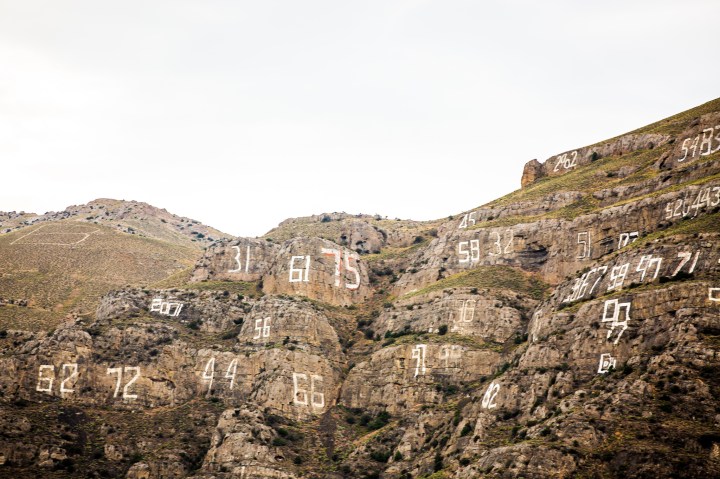
Arco's wacky "Number Hill" is more of a roadside attraction than anything, but travelers through the area might wonder what the numbers mean.. And how they got there. Aliens? Long distance communication coordinates?
None of the above.
Instead, local high schoolers have an annual tradition of painting their graduating class year on the rocks as a symbol of the memories formed there.
None of the above.
Instead, local high schoolers have an annual tradition of painting their graduating class year on the rocks as a symbol of the memories formed there.
Advertisement
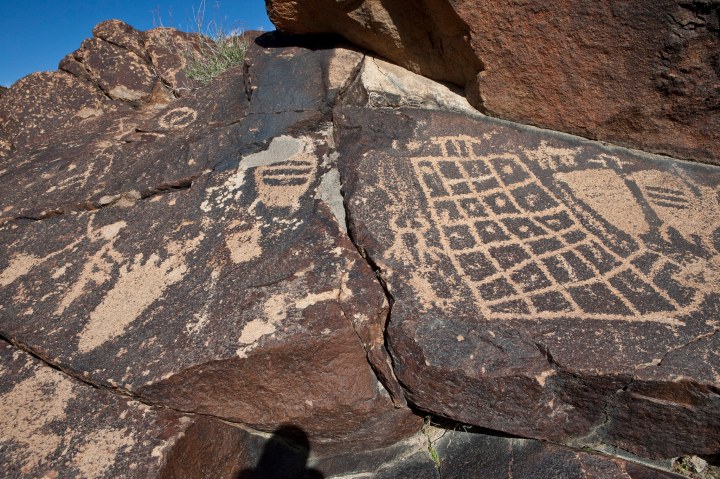
Unbeknownst to many, Idaho is a hotbed of ancient relics and historical remnants, and the Boise Basin in particular offers dozens of opportunities for full-scale immersion into ancient times. Unlike pictographs, petroglyphs are historic - often Native American - images directly carved into the surface of a rock. Like the volcanic wonderland that it is, most of Idaho's petroglyphs were made approximately 12,000 years ago by chiseling into basalt. From there, natural oxidation creates the variations in color that can be seen today.
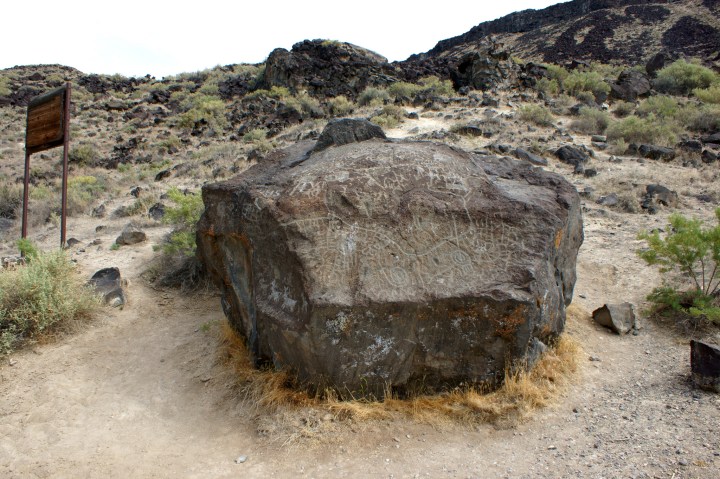
Wees Bar in Southern Idaho is considered to have the most dense concentration of these rare markings, but Celebration Park - Idaho's only archaeological park - is considered to be the most easily accessible site. Both are within the Morley Nelson Snake River Birds of Prey Conservation Area. Map Rock, west of Melba on highway 45, is a rock the size of a small car, considered by many to be a map of the area.
Further north, the north shore of Lake Pend Oreille boasts some images of its own, carved into the rock faces and able to be seen by boat. Just remember not to touch!
Further north, the north shore of Lake Pend Oreille boasts some images of its own, carved into the rock faces and able to be seen by boat. Just remember not to touch!
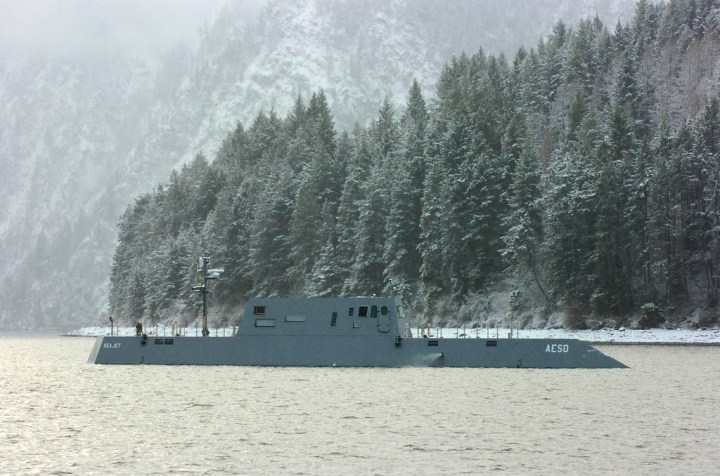
Few people below the Panhandle realize that Idaho has its own "Area 51" - a specialized research detachment for submarines in Lake Pend Oreille. As the deepest lake in the state an the 5th deepest in the country, these dark waters are a prime place for Naval testing and training. So if you go for a paddle… who knows what's underneath you!
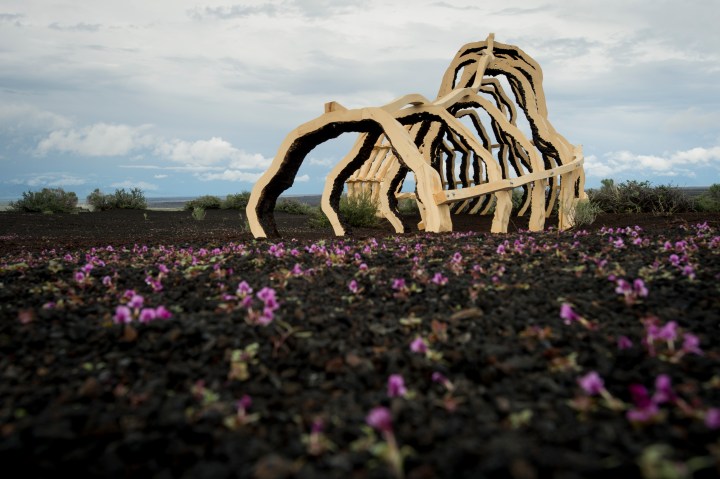
Art in the desert? This massive sculpture - called Spur by artist John Grade - is a one of a kind piece that pays tribute to and takes inspiration from Idaho's one of a kind Craters of the Moon National Monument. Specifically, it's reminiscent of a train moving through the lunar landscape, with its cedar ribs that mimic the light passing through rail windows. The arches of the piece rise and fall much like the landscape itself, and the hollow interior has the feeling stepping inside one of the monument's underground caverns.
The piece was commissioned for the centennial anniversary of the National Park Service, and stood for a time in the reserve itself. Today, it sits in Ketchum on the Wood River Trail.
What other mysterious or unusual places would you add to this list? Share your photos! I have no doubt that you’ll inspire my spring travels with what your own backyard has to offer!
OnlyInYourState may earn compensation through affiliate links in this article. As an Amazon Associate, we earn from qualifying purchases.

